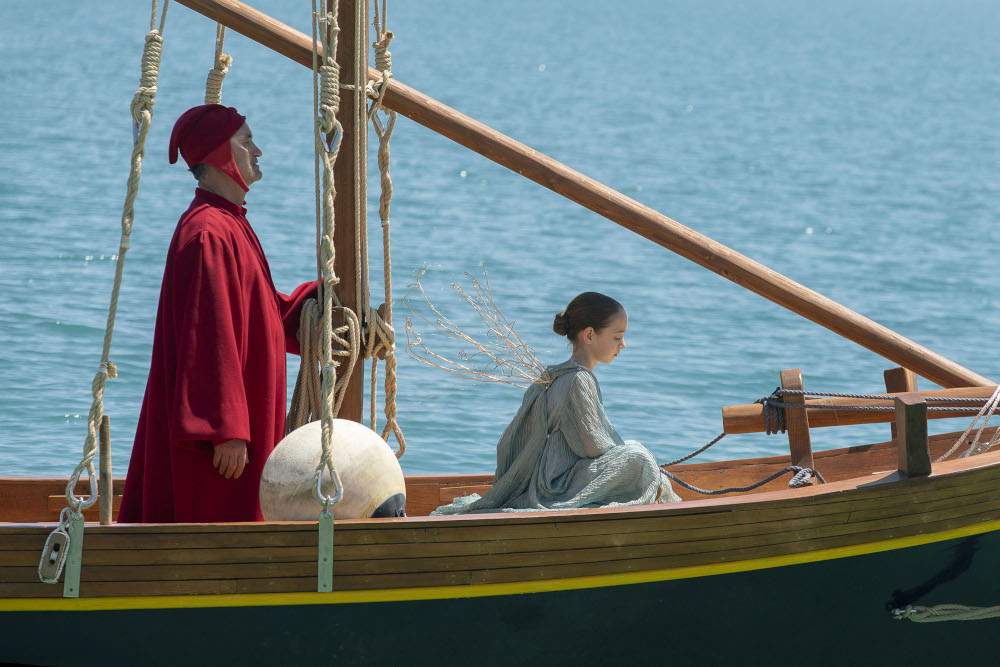Mimmo Paladino ’s new film is titled La divina cometa (The Divine Comet ) and comes fifteen years after Quijote, the Campania-based artist’s debut film. The new film project is scripted by Mimmo Paladino together with Maurizio Braucci (Silver Bear for best screenplay in 2017 for La paranza dei bambini) and is produced by RUN FILM and NUOVO TEATRO in collaboration with Rai Cinema and with the contribution of Film Commission Regione Campania and MiC Direzione Generale Cinema e Audiovisivo.
It was presented on Sunday, October 16, at the Rome Film Festival.
Dante’s Divine Comedy, but also the nativity scene, with the figure of Benino played by Enzo Moscato, offer the pretext for Paladino to create a tale through characters, stories and lives in a journey that stages the human story, bound together by the curious presence of the little “l’urio” the elf child, played by Riccardo Coppola. It is an archaic and popular legend not among the most widespread, in essence comparable to the Neapolitan figures of the “munaciello” and the “bella ’mbriana.”
The film opens with the image of Dante navigating guided by the"comet child." His journey among the damned will gradually merge with that of a family in search of home. Thus the figures of the Comedy alternate and mingle with those of the nativity scene among artistic suggestions, homages, references to the magical-popular tradition, in a babel of languages, gestures, presences, silences and voices on which Natale in casa Cupiello and Napoli milionaria echo!
And as in the nativity scene, there is room for well-known and new characters (from St. Alphonsus Maria de’ Liguori to Pythagoras, Count Ugolino to Giordano Bruno), called upon to move in places or situations that alternate between conceptual or everyday settings, where, however the sense of place is reinterpreted within a kind of alchemical pot in which everything has something to tell (abandoned stations, sports fields, quarries, foundries, blue mountains), and with careful work on language (Dante and Bruno speak in Neapolitan).
The cast has many distinguished guests: professional and amateur actors, musicians are involved, as well as small cameos by friends and intellectuals. Each character is primary because they are unique and necessary for everything to show; just as in the nativity scene there is a human chorus that surrounds and watches what is happening, with no one protagonist emerging over the others.
The film was shot in Campania between Apice, Benevento, Naples, Paduli, Pietrelcina, Rotondi and Solopaca, and in Puglia between Manfredonia, Mattinata and Monte Sant’Angelo.
Sergio Vitolo (Dante), Emma Arensi (comet girl), Roberto De Simone (a voice), Pietro Valeri Curti (Tubettiello), Ginestra Paladino (Nannina), Luigi Credendino (Totore), Enzo Moscato (Benino), Giuliana Gargiulo (noblewoman), Erasmo Treglia (hurdy-gurdy player), Peppe Servillo (saint’Alfonso Maria de’ Liguori), Elio De Capitani (numbers man), Sebastiano Grasso (Pythagoras), Emanuele Donadio (disciple of Pythagoras), Sergio Rubini (stationmaster), Francesco De Gregori (music magician), Alessandro Haber (theater magician), Ferdinando Bruni (painting magician), Nino D’Angelo (magio poetry), Giovanni Veronesi (Pontormo), Gian Ruggero Manzoni (Charon), Toni Thorimbert (a damned man), Toni Servillo (Ugolino), Leandro Ianniello (Paolo), Azzurra Mennella (Francesca), Angelo Curti (wunderkammer guide), Riccardo Coppola (l’urio), Ettore Ianniello (Glenn Gould), Matteo Prencipe (innkeeper), Giovanni Esposito (magio nulla), Tonino Taiuti (glassmaker), Tomas Arana (Virgil), Mimmo Borrelli (Giordano Bruno), Luca Saccoia (shoe salesman), Daniele Sanzone (himself), Eliot Sumner (Lucifer), Cristina Donadio (three furies).
Image: Stage photo of La divina cometa by Mimmo Paladino. Credit Pasquale Palmieri
 |
| Fifteen years later, Mimmo Paladino presents his new film The Divine Comet |
Warning: the translation into English of the original Italian article was created using automatic tools. We undertake to review all articles, but we do not guarantee the total absence of inaccuracies in the translation due to the program. You can find the original by clicking on the ITA button. If you find any mistake,please contact us.